A stealth contemporary art work is nestling inside the very core of the Picasso and the Avant-Garde exhibit at the Philadelphia Museum of Art.
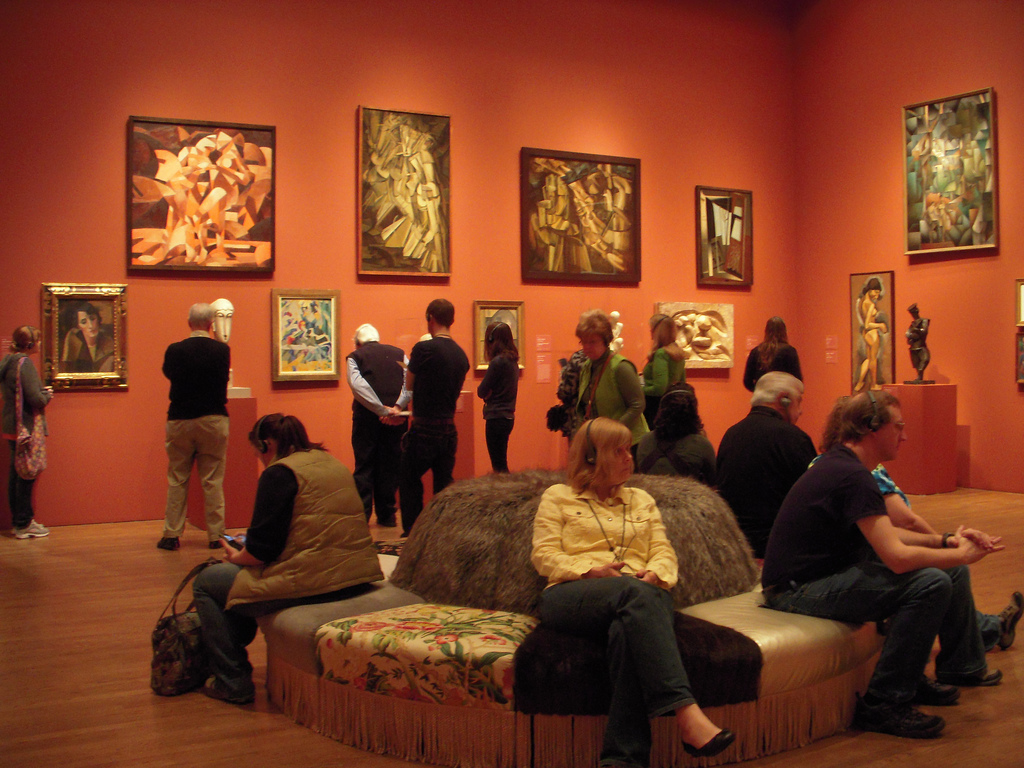
Virgil Marti’s pouf, aka Sigmund, sits in a place of honor–dead center in the beautiful terra cotta red salon room that replicates the 1912 Salon d’Automne. Sigmund is meant for reclining.
The Marti installation looks like it belongs in the room, which is filled with paintings and sculpture by artists including Juan Gris, Francis Picabia. Marcel Duchamp (check out the Nude Descending a Staircase in the background of the picture above) and Amedeo Modigliani.
We visited the show on a Wednesday afternoon, and business was brisk as we observed museum goers sitting on Sigmund without a second thought, resting against the cone of fur to better view the upper reaches of the salon-style hanging.
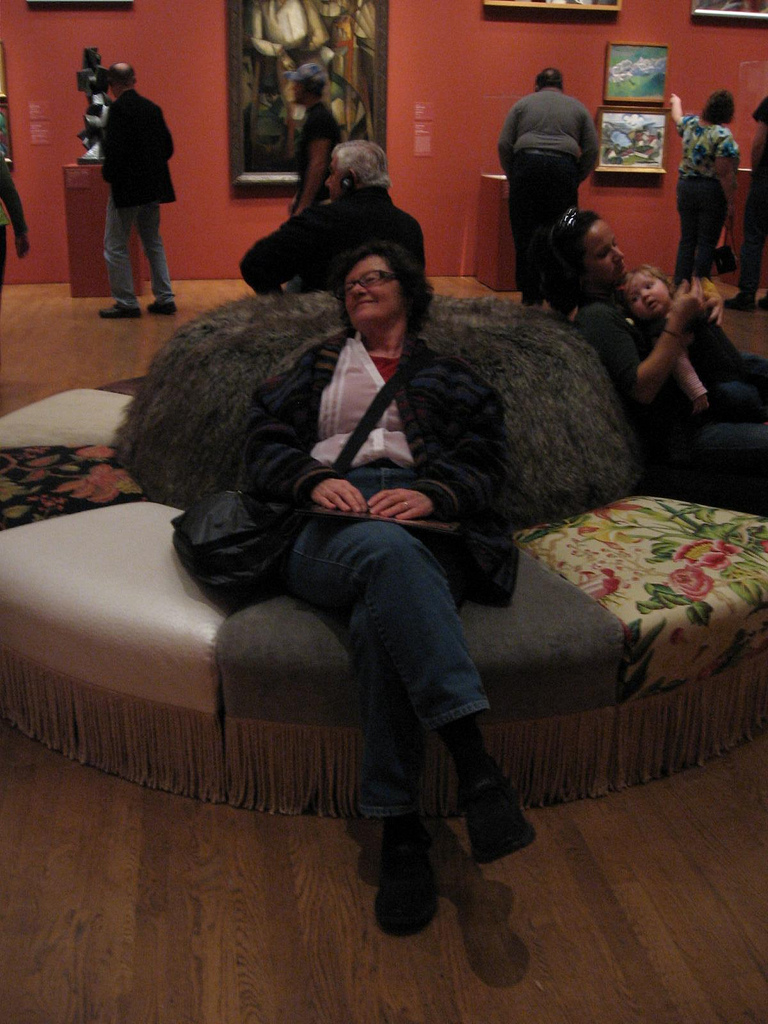
We also tried it out for ourselves! We were both enchanted with Virgil Marti cheek by jowl with art historical giants. Well, Pablo wasn’t in the same room, because he wasn’t in the 1912 show, but he dominated the rest of the exhibit.
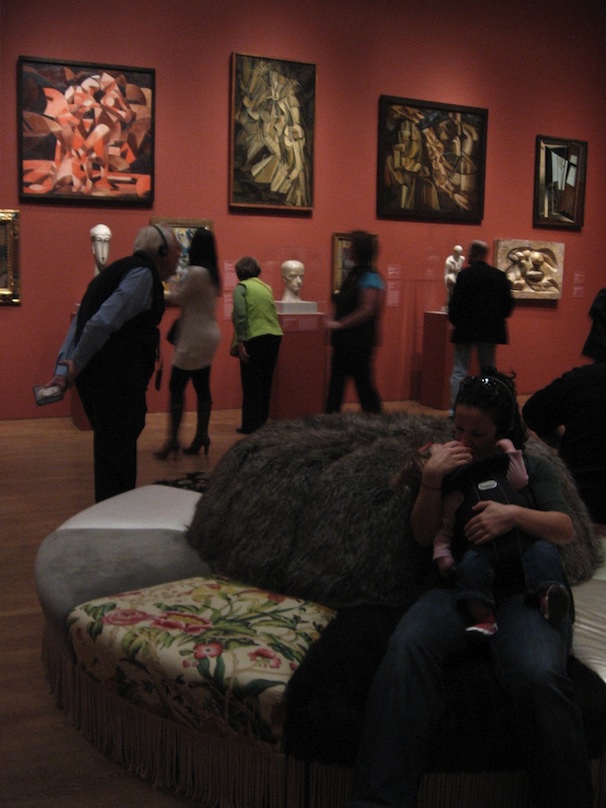
On closer examination, the pouf is no powder pouf. It is subversive and witty, merging a hillock of fake fur behind seat sections upholstered with a quirky range of fabrics from embroidered silk to metallic leather! The upholstered shape and size overwhelm the materials just enough to provide inviting seating that doesn’t scream “don’t touch, I’m art.”
The museum commissioned Marti to make this for the salon recreation. The PMA owns some original Victorian poufs, Curator Michael Taylor explained, but they’re not to sit on anymore. Marti’s new pouf, with its high backrest, is maybe the biggest pouf the artist has made, Taylor said. The pouf is designed, as the originals were, to allow a salon viewer neck support when they lean back to observe art hung almost at ceiling level.
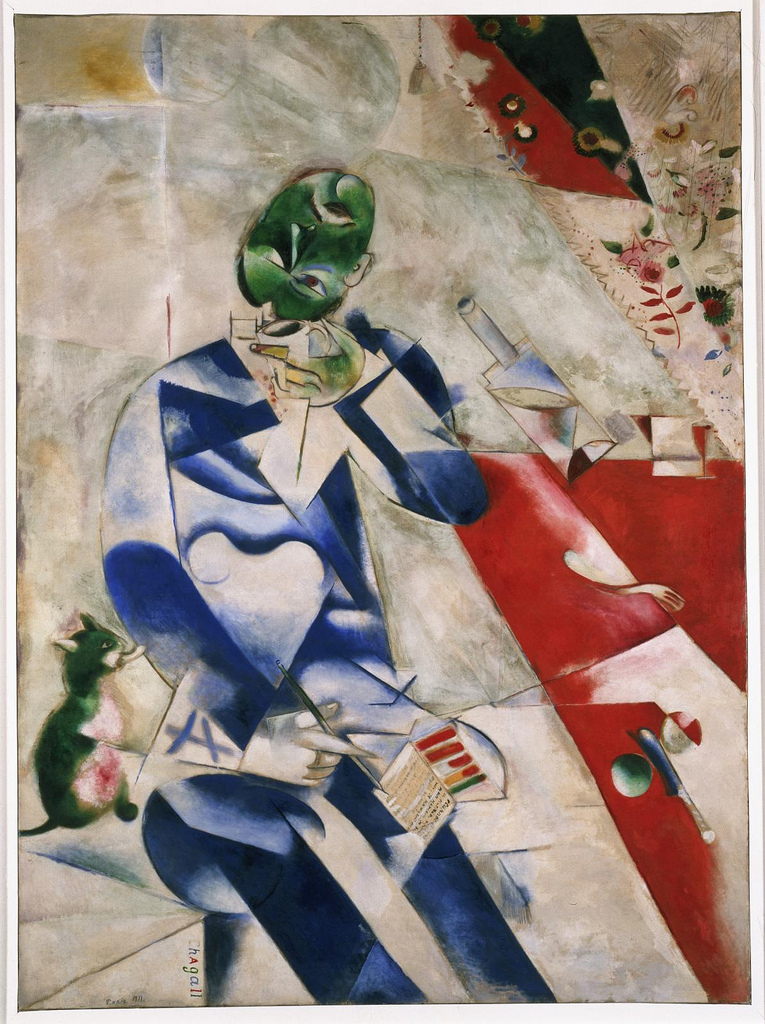
Speaking of craning your neck to the ceiling, Taylor pointed to some of the high-up paintings and said they had never been shown at the PMA at that elevated placement — or on a terra cotta wall. He said the light catches the works differently at that rarefied height and lets them sparkle in a different kind of way.
In the salon, we fell in love with the Juan Gris paintings, and then dashed around the rest of the show–200-plus art works, mostly from the museum’s own collection, with only ten works on loan, says Taylor. We were looking for more work by Gris. Nearly each and every one was satisfying, with tremendous color and graphic snap. Taylor told us Gris was a neighbor of Picasso’s and a cartoonist before he began painting, and that cartoon sensibility certainly shows. About the form of “synthetic cubism” he practiced, Taylor said Gris picked it up very quickly.

We admired the velvety blacks of Picabia, which on closer inspection were shiny and tar-like. How’d he do that? And we were struck throughout by how many people of the period were making the same sort of imagery — men in bars, women in bars, portraits galore and references to industry and furniture. It must be taste. Taste of the times, taste of the artists and taste of the collectors. How different is that from today with sky crystals, eco-deer and skulls peppering the gallery scene, the obvious taste of artists who make the work and collectors who buy it?
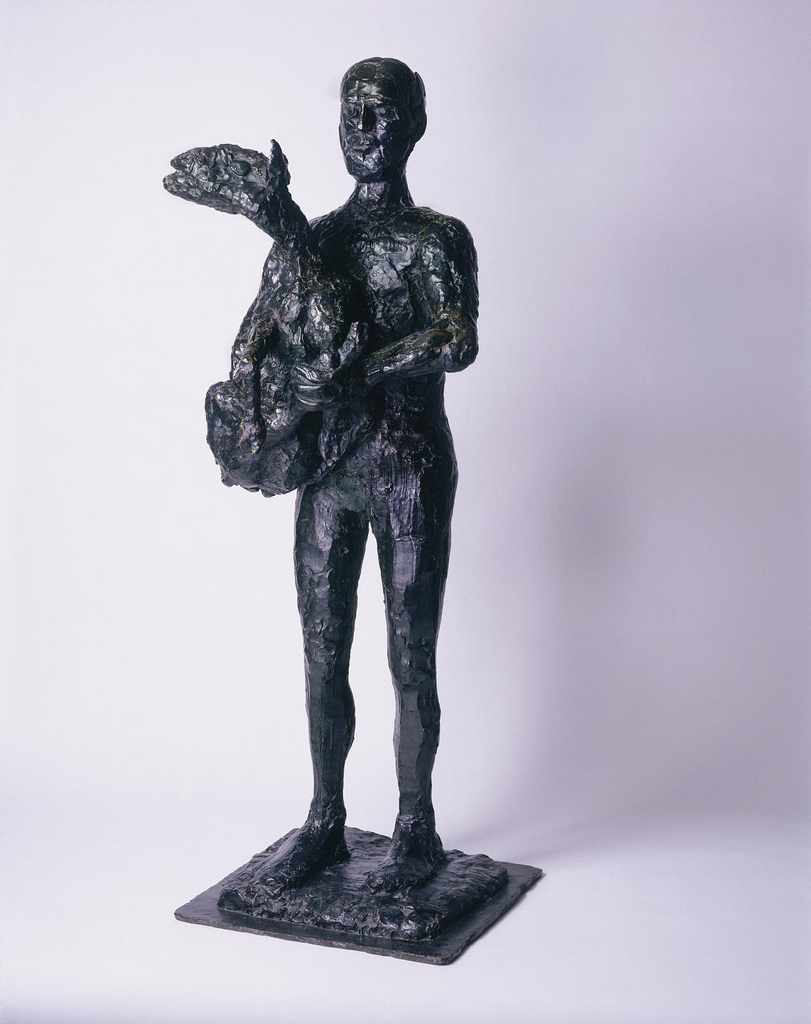
The exhibit is hung chronologically and includes photographs of the literati of the day as well as the artists. And at the end, with World War II era works, the show becomes somber and elegaic. Picasso’s Man with a Lamb — a work that towers over you in the middle of the last room — is poignant as it seems to encapsulate the sadness and horror of witnessing war and destruction and being powerless to stop it.
The show requires tickets. Here’s the rest of the ticket info.









